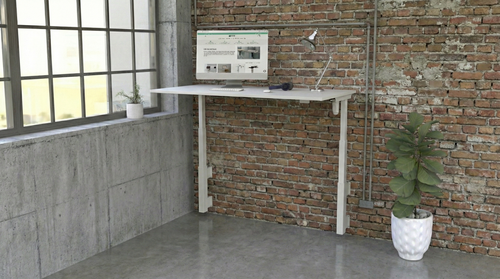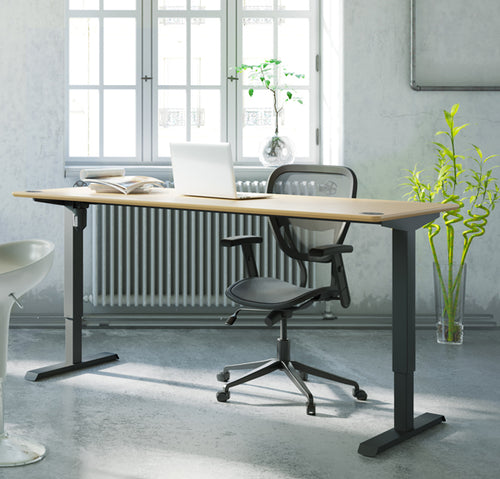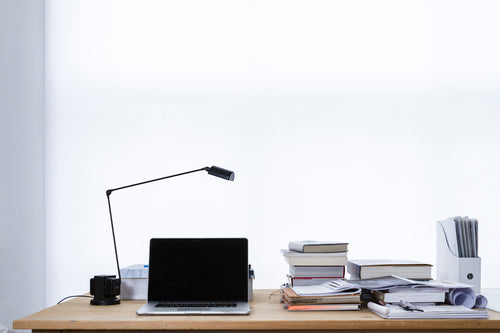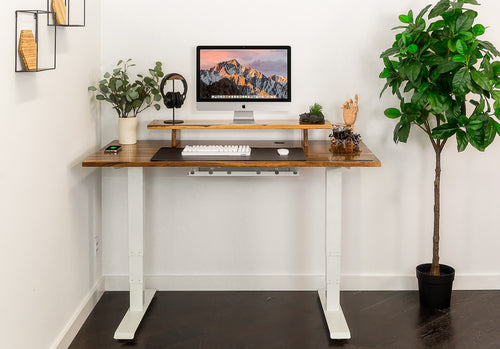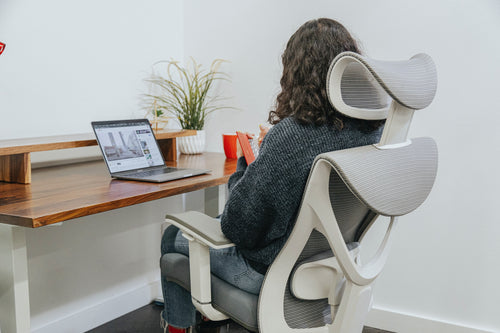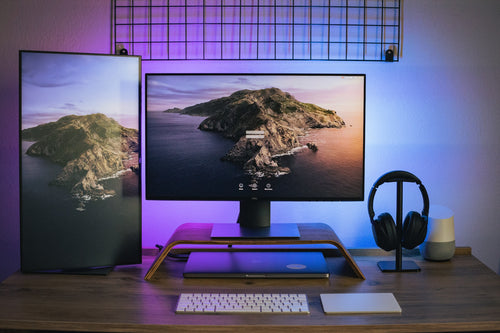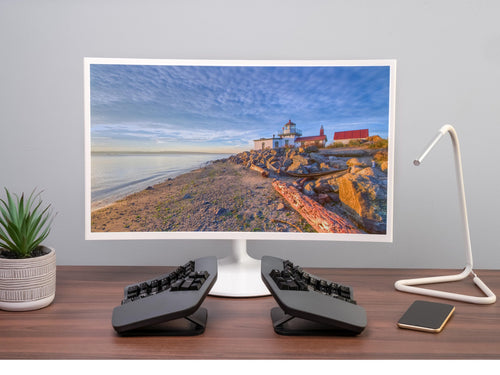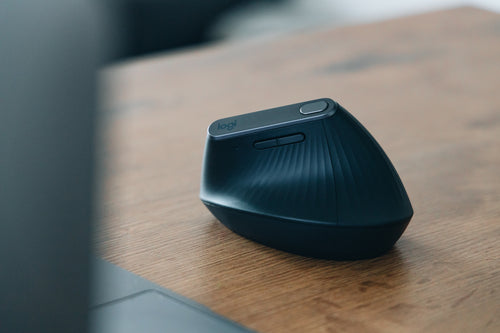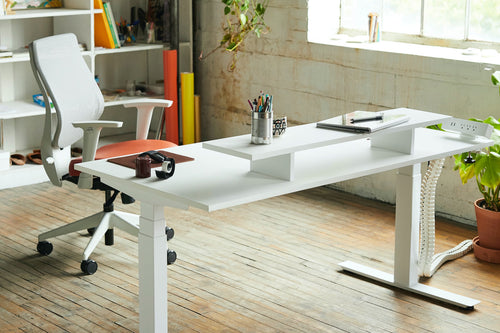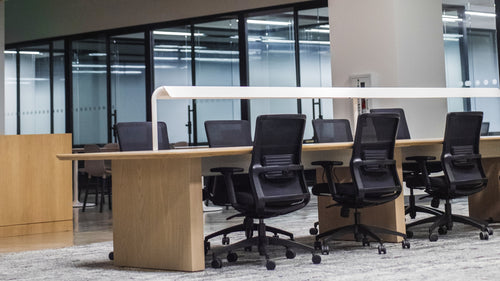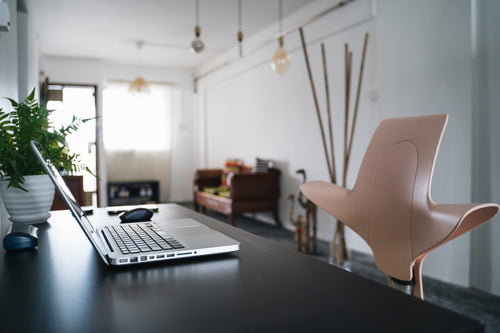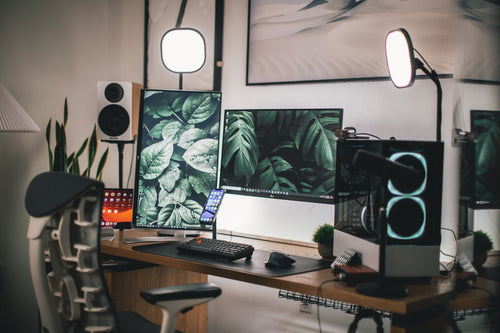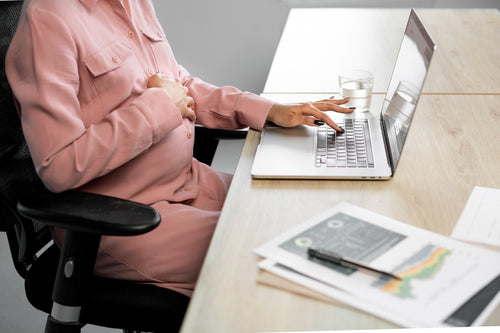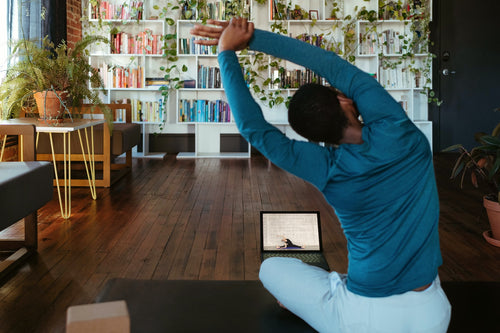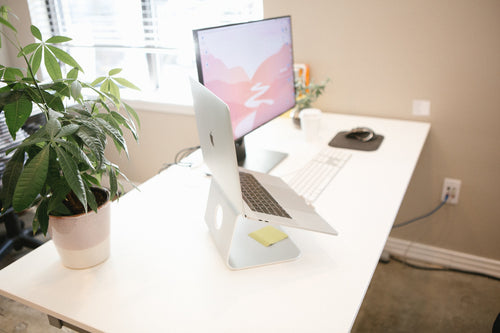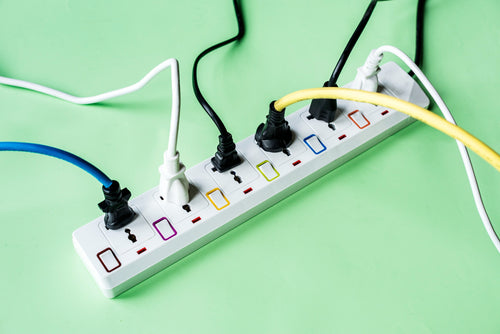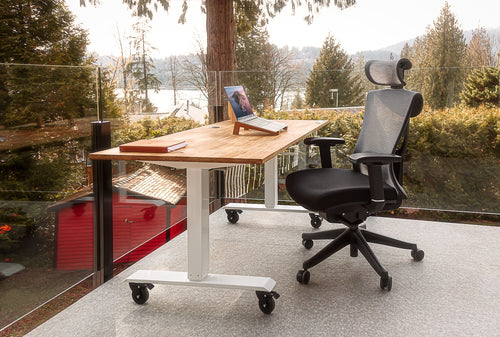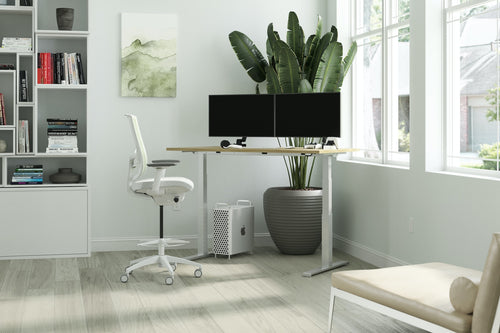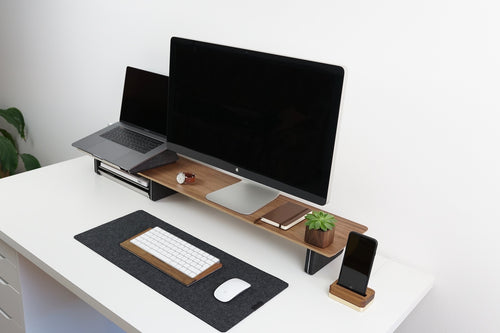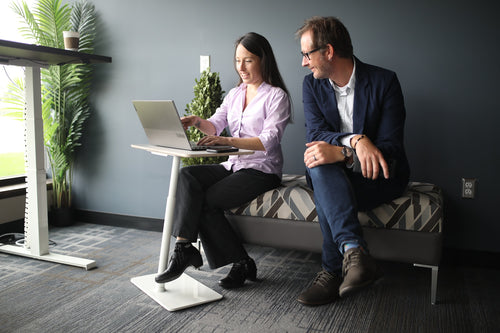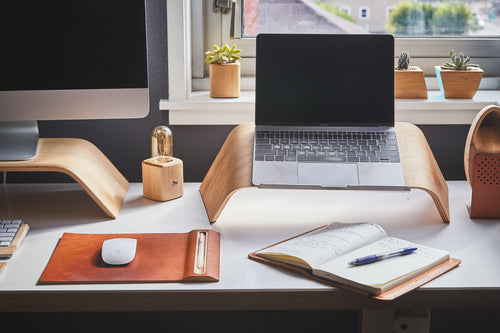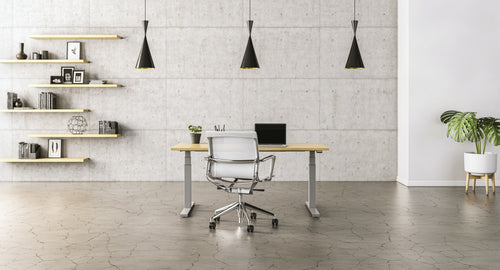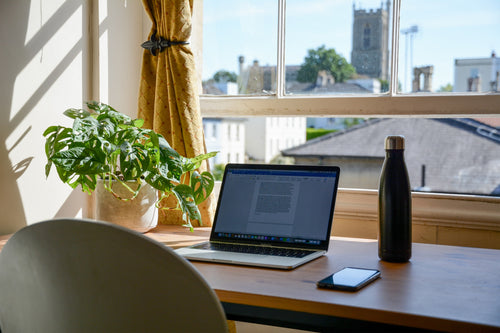Working from home has become the new normal for many people due to the COVID-19 pandemic. While it offers some benefits such as flexibility, convenience, and cost savings, it also poses some challenges such as maintaining productivity, communication, and well-being. One of the most important aspects of working from home is setting up an ergonomic home office that supports your health, comfort, and performance.
Ergonomics is the science of designing and arranging things to fit the needs and abilities of the user. It aims to prevent injuries and illnesses caused by repetitive strain, awkward posture, excessive force, or environmental factors. Poor ergonomics can lead to musculoskeletal disorders (MSDs), eye strain, headaches, fatigue, stress, and reduced quality of work.
In this article, we will provide you with a comprehensive checklist of everything you need to know to create an ergonomic home office that suits your specific needs and preferences. We will cover the following topics:
- How to choose a suitable space for your home office
- How to adjust your chair, desk, monitor, keyboard, mouse, and other accessories for optimal posture and comfort
- How to avoid glare, noise, and other distractions in your work environment
- How to incorporate breaks, exercises, and stretches into your work routine
- How to set boundaries between work and personal life
Choosing a Suitable Space for Your Home Office
The first step in creating an ergonomic home office is finding a space that offers privacy, adequate lighting, easy access to power and internet, and enough room for your equipment and materials. Depending on your living situation, you may have different options for setting up your home office. Here are some tips for choosing a suitable space:
- If you have a spare room or a dedicated office area in your home, use it as your primary workspace. This will help you separate work from your personal life and minimise distractions from other household members or activities.
- If you do not have a separate room or office area, use a table or desk near outlets with an adjustable office chair for good postural support. Avoid working on the couch, bed, or floor as these can cause poor posture and back pain.
- If you have a small studio apartment or limited space, you may have to get creative with your home office setup. You can use an ironing board as an adjustable-height work surface, a kitchen counter as a standing desk, or a stack of books as a makeshift desk. Just make sure you have enough space for your monitor, keyboard, mouse, and other essentials.
- If possible, choose a space that has natural light and a window view. This will help you reduce eye strain, improve mood, and enhance creativity. However, avoid placing your monitor directly in front of or behind a window as this can cause glare and reflection.
Adjusting Your Chair, Desk, Monitor, Keyboard, Mouse, and Other Accessories
Once you have chosen a space for your home office, you need to adjust your chair, desk, monitor, keyboard, mouse, and other accessories to achieve an ergonomic posture and comfort. Here are some general guidelines for adjusting your workstation:
- Your chair should be fully adjustable in height, seat depth, back angle, and armrests. It should support your lower back (lumbar spine) and allow you to sit with your feet flat on the floor or on a footrest. Your hips and knees should be at about 90 degrees angle.
- Your desk or work surface should be at your elbow height when you are seated. It should be large enough to accommodate your monitor, keyboard, mouse, and other items you use frequently. It should also be close to the front edge of the desk allowing space for your wrists to rest on the desk surface.
- Your monitor should be positioned directly in front of you at least an arm’s length away. The top of the screen should be slightly below eye level. You may need to use a monitor stand or riser to adjust the height. You should also adjust the brightness, contrast, and font size of your screen to suit your vision and lighting conditions.
- Your keyboard should be flat and not propped up on keyboard legs as an angled keyboard may place the wrist in an awkward posture when keying. It should be at the same level and as close as possible to your mouse. When using your keyboard and mouse, your wrists should be straight and your upper arms relaxed.
- Your mouse should be comfortable to use and fit the size and shape of your hand. It should be at the same level and as close as possible to your keyboard. You may want to try different types of mice such as trackballs, touchpads, or vertical mice to find one that suits you best.
- Other accessories that can enhance your ergonomic home office include:
- A desk lamp that provides adequate light for reading or writing documents. Place it on the opposite side of your dominant hand to avoid casting shadows.
- A monitor arm that allows you to adjust the position and angle of your monitor easily.
- A cable tray that helps you organise and hide the wires and cords of your devices.
- A desk clamp power outlet that provides easy access to power and USB ports without cluttering your desk.
- An accessory bin or organiser that helps you store and access your pens, paper clips, sticky notes, and other items.
- Speakers or headphones that provide good sound quality and noise cancellation for listening to music, podcasts, or online meetings.
Avoiding Glare, Noise, and Other Distractions
Another aspect of creating an ergonomic home office is avoiding glare, noise, and other distractions that can affect your concentration, productivity, and well-being. Here are some tips for reducing or eliminating these factors:
- Glare can cause eye strain, headaches, and reduced visibility of your screen. To avoid glare, you should:
- Adjust the position and angle of your monitor to avoid direct sunlight or artificial light sources.
- Adjust the brightness and contrast of your screen to match the ambient light level.
- Use curtains, blinds, or shades to control the amount of natural light entering your room.
- Use an anti-glare screen or filter to reduce the reflection on your screen.
- Noise can cause stress, irritation, and difficulty in hearing or communicating. To avoid noise, you should:
- Choose a quiet space for your home office away from sources of noise such as traffic, appliances, pets, or children.
- Use a door or a screen to create a physical barrier between you and the noise source.
- Use headphones or earphones to block out or mask the noise. You can also use white noise apps or machines to create a soothing background sound.
- Communicate with your household members about your work schedule and expectations. Ask them to respect your privacy and minimise interruptions when you are working.
- Distractions can cause a loss of focus, motivation, and efficiency. To avoid distractions, you should:
- Turn off or mute notifications from your phone, email, social media, or other apps that are not related to your work.
- Set a clear and realistic schedule for your work tasks and stick to it. Use a calendar, timer, or planner to help you manage your time and priorities.
- Take regular breaks from your work to refresh your mind and body. You can use the Pomodoro technique or other methods to divide your work into short intervals with breaks in between.
- Reward yourself for completing your work tasks with something enjoyable such as a snack, a walk, or a hobby.
Incorporating Breaks, Exercises, and Stretches into Your Work Routine
One of the most important things you can do to maintain your health and well-being while working from home is to incorporate breaks, exercises, and stretches into your work routine. These activities can help you prevent MSDs, improve blood circulation, relieve tension, and boost energy. Here are some suggestions for incorporating breaks, exercises, and stretches into your work routine:
- Breaks: You should take a break from your work every 20 to 30 minutes. During your break, you should:
- Stand up and move around. You can walk, jog, dance, or do any physical activity that you enjoy.
- Change your posture and position. You can switch from sitting to standing, or vice versa, or use different chairs or cushions to vary your support.
- Rest your eyes. You can follow the 20-20-20 rule: every 20 minutes, look at something 20 feet away for 20 seconds. You can also blink frequently, close your eyes gently, or massage them lightly.
- Exercises: You should do some exercises before, during, and after your work day. These exercises can help you warm up, stretch, strengthen, and relax your muscles and joints. You can do exercises such as:
- Neck rolls: Slowly rotate your head in a circular motion clockwise and counterclockwise. Repeat 10 times in each direction.
- Shoulder shrugs: Raise your shoulders toward your ears and hold for a few seconds. Then lower them down and relax. Repeat 10 times.
- Arm circles: Extend your arms out to the sides at shoulder level. Slowly rotate them in a circular motion forward and backwards. Repeat 10 times in each direction.
- Wrist flexion and extension: Hold one arm out in front of you with the palm facing down. Use the other hand to gently bend the wrist down until you feel a stretch in the forearm. Hold for a few seconds. Then bend the wrist up until you feel a stretch in the opposite direction. Hold for a few seconds. Repeat with the other arm. Do this 10 times for each arm.
- Back twist: Sit on a chair with your feet flat on the floor. Place
Creating an ergonomic home office is not only beneficial for your health and comfort but also for your productivity and performance. By following this comprehensive checklist, you can set up a workspace that suits your specific needs and preferences. You can also avoid or reduce common problems such as glare, noise, and distractions that can affect your work quality and well-being. Moreover, you can incorporate breaks, exercises, and stretches into your work routine to prevent injuries, improve blood circulation, relieve tension, and boost energy. Remember to adjust your workstation and work habits regularly to meet your changing needs and goals.



